Plants to Eliminate
Some grasses and weeds are just better off not being allowed in the paddock at all!
We all would rather do without thistle but in actual fact most thistle species found in NZ are harmless and in fact, some horses love picking off the flower heads to devour the kernal.
Weeds like buttercup are bad but are not normally touched by horses unless they are desperate. Never let your feed get down to the level where they are forced to eat this weed!
Most of the information contained about these plants comes from the excellent 2008 DVD ( Poisonous Plants in the Pasture: A Horse Owners Guide) put together by Dr Deb Bennett PhD which can be obtained from her website at
www.equinestudies.org
Grasses
Rye Grass
Most people are now aware of the danger of rye grass however there is a lot of misinformation about LOW endophyte Rye grass.
LOW endophyte rye grass are Rye-grasses that have been artificially modified to either eliminate the endophytes altogether (Zero-endophyte) or just the most toxic endophytes while retaining the less toxic ones (Low-endophyte) for protection against insect damage to the grass.
None of them are suitable for horses!
All rye-grasses are “Skull & Cross-Bones” for horses. I cannot emphasize this enough.
Rye-grasses are meant for rapid weight-gain and milk production in commercial livestock which do not have a long lifespan.
More about Rye Grass here...
Phalaris 
Sometimes known as Reed Canary Grass. PHALARIS can harbour toxic alkaloids which cause a serious nervous syndrome and Phalaris staggers. Seasonal and weather patterns appear to affect alkaloid concentration, as most toxicity occurs in autumn and in times of drought. Regrowth after grazing or mowing also shows a considerable increase in alkaloids.
Often found on the edges of ditches and lakes. Best eliminated and certainly not to be sown.
Barley Grass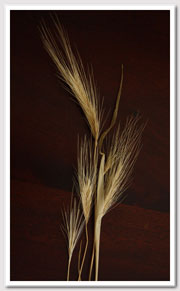
Don’t let this seed and spread, zap it now with roundup while it is flowering.
This will usually sterilize the seeds and prevent the seed heads from becoming sharp/brittle.
Barley grass is a real hazard in hay, we have had to call the vet to extricate the sharp seed-heads from our horses tongues when we unknowingly fed hay containing barley grass. Expensive lesson!
Paspalum 
Paspalum in New Zealand and Australia can become a dominant grass in warmer regions, particularly during summer and autumn when most other grasses will have browned off.
The problem is that Paspalum harbours a fungus called Paspalum Claviceps manifesting on the seed-head as ‘ergots’ (which resemble mouse droppings). Ergots are chokka full of chemicals known as toxic alkaloids: The Paspalum ergot ONLY affects the flower/seed-head, NOT the rest of the grass. Roots, stem and foliage are free of this fungus and safe for livestock to eat.
So the grass itself is not toxic, but the seed-heads are a problem when parasitized by the ergot fungus which can produce toxic ‘pyridine alkaloids’ (nasty chemicals) in the little ‘mouse-droppings’ that appear in late summer or autumn.
The best strategy, although not easy to achieve, is to keep it grazed so it doesn’t go to seed. If you mow or slash Paspalum, it just produces smaller seed-heads on shorter stems!
To date, I have never known of horses developing ‘Paspalum staggers’, likely because when Paspalum matures it becomes less palatable so hopefully they don’t consume enough and will go for other options. The little ergots however stick to the horses muzzle and legs and are liable to be ingested accidentally.
FYI: Affected animals become very excitable, start trembling, lose muscular control, stagger and even fall over. They recover in a few days if removed from the infected pasture.
Legumes
Clover
 Clover is very high in starch (complex sugars), contains phyto-estrogens which can upset hormones, contains photodynamic pigments which lead to mud-fever and sunburn and there is a very strong correlation between clover and head-flicking.
Clover is very high in starch (complex sugars), contains phyto-estrogens which can upset hormones, contains photodynamic pigments which lead to mud-fever and sunburn and there is a very strong correlation between clover and head-flicking.
Consequently it is not on the list of good grasses for horses!
Clover is a...
- Major cause of mud-fever & sun-burn
- Turns mares into nymphomaniacs
- Turns geldings into stallions
- Major contributor to head-flicking
- Major contributor to obesity & laminitis
- Cyanogenic under certain conditions
Read more about Rye & Clover here
Sub-terranean Clover
The plants' name comes from its unique underground seed development, different to other clovers. It is a small leaf clover and has little white flowers in the spring.
It does well in poor-quality soil where other clovers cannot survive. Sub-terranean clover is self-fertilizing, unlike other clovers and alfalfa (lucerne), which are pollinated by insects, especially honeybees. Hence it’s predominance in over-grazed ‘horse-sick’ paddocks.
It was used extensively as fodder in South and Western Australia but its high Phytoestrogen content caused serious reproductive problems in livestock grazing it especially sheep. Low estrogen strains have since been developed for this purpose.
It will cause reproductive problems in horses too especially when the horses have nothing else to eat! Read Sabrina’s Story
Lucerne
Lucerne has a high phyto-estrogen content. In this respect it is similar to clovers and has the potential to upset the cycling of mares and cause other reproductive problems.
Yet another issue is the fact that lucerne, like clover, is high in photodynamic (fluorescing) pigments which are the real cause of sun-burn and mud-fever.
Read : Mud-Fever & Sunburn
Not so widely known is the most important fact that lucerne is high in potassium and extremely low in sodium. Being a legume it stores sodium in the root nodules so there is virtually none in the above ground portion of the plant.
Lupins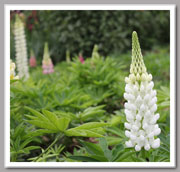
Some but not all lupine species contain quinolizidine and piperidine alkaloids. Poisonous lupines have their effect in two different ways, first, they are teratogenic, affecting the blood supply to the uterus and also interfering with the normal calcium metabolism which can mean systemic bone development disorders characterised by malformed joints and cleft palate.
The second negative affect of lupine alkaloids is neurotoxicity, characterised primarily by muscle tremors.
A third problem, often confounded by the first two, arises from alkaloids produced not by the lupine itself, but by a fungus that grows on lupine pods and stems.
Lupines are very palatable to horses with the young leaves and shoots being both the most tasty AND the most poisonous.
Although some species are non poisonous, it is best to remove any lupin from the horses grazing as they are not easy to tell apart.
Weeds
Buttercups 
Buttercups taking over your pasture is indicative of poor drainage. They are potentially harmful when they first grow but are no longer toxic after a hard frost or when dried in hay.
The consumption of freshly growing buttercups may cause:
- irritation and little sores or blisters around the mouth area
- even colic like symptoms and/or diarrhea
Spraying them out with MCPA and then improving drainage or aerating the soil will help prevent buttercup from taking over. Otherwise you’ll end up with no grass!
Catsear
Driving around you will see lots of paddocks  that look like a sea of yellow flowers.
that look like a sea of yellow flowers.
They are the flowers of the 'Cat's Ear' or 'false dandelion'. Dandelions have a thicker single flower on a single thicker stem whilst the Cat's Ear has a branched stem with multiple little flowers.
Cat's Ear is very palatable to horses and is a major cause of stringhalt. It is another reason to do the annual broad-leaf spray off as the same spray that gets rid of clover will also eliminate this potential nasty.
Capeweed
 In a drought ‘flat-weeds’ like Cape Weed and Cat’s Ear proliferate. They have deep tap-roots and thrive in the dry conditions. Sometimes it’s not long and it has become the predominant plant in the pasture. These weeds with their large succulent leaves are very palatable so horses love them. Unfortunately there is some aspect to these plants, yet to be positively identified that causes problems with some of the nerves which control the hind limbs. This is a classic example illustrating that horses don’t ‘know’ that a plant is ‘bad’ for them. They consume them because they like the taste.
In a drought ‘flat-weeds’ like Cape Weed and Cat’s Ear proliferate. They have deep tap-roots and thrive in the dry conditions. Sometimes it’s not long and it has become the predominant plant in the pasture. These weeds with their large succulent leaves are very palatable so horses love them. Unfortunately there is some aspect to these plants, yet to be positively identified that causes problems with some of the nerves which control the hind limbs. This is a classic example illustrating that horses don’t ‘know’ that a plant is ‘bad’ for them. They consume them because they like the taste.
Capeweed has also been indicated in cases of stringhalt.
Thistles
Horses find the purple flowers of this thistle 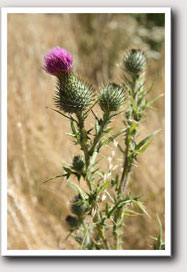 (and milk thistle) very yummy; they go for them at every opportunity.
(and milk thistle) very yummy; they go for them at every opportunity.
It is OK for horses to eat all parts of the thistles. You too have probably seen them devour them prickles and all! Of course they do prefer the younger stems.
While all thistle seeds will yield oil It is the seeds of the Milk Thistle that are good for the liver.
However if you see thistles popping up in your paddock scoop some salt on top of them and they will shrivel up in no time. If you let them drop their seeds you will have a paddock full of them next year and this is NOT such a good thing! Also as the prickles are extremely shaor they can cause damage to the sensitive parts of the horses mouth while eating - unusual but not unheard of!
Thistles can be a sign that your soil is getting too acidic - putting some lime on will help to reduce thistle population.
There are many different varieties of thistle.
Ragwort
Ragwort contains pyrrolizidine alkaloids compounds that are poisonous to most animals.
Normally a horse won't eat it however they will eat it if there is little else to eat. The real danger is if it is in hay.
Ragwort damages the liver when eaten. The toxic effect builds up over time, causing irreparable damage. This means that your horse will get just as ill from eating small amounts of ragwort over a long period of time as it would do from eating a large quantity in one go.
The hore may become lethargic or behave abnormally. They can develop photosensitisation, where areas of pink skin become inflamed and painful when exposed to sunlight, like serious sunburn. They can also lose significant amounts of weight, even though they may be eating well.
Eventually they may go blind, have to fight for breath, start to wander or stagger or stand pushing their head against the wall. The symptoms and subsequent death can come about so quickly that owners have sometimes found their horse dead without warning.
Never leave uprooted ragwort in the field where the horse can get to it - it becomes more palatable when it has wilted or dried!
Hemlock
Poison Hemlock contains an array or peperidene alkaloids - chemicals similar to nicotine.
They produce initial stimulation followed by severe depression of the central nervous system, resulting in paralysis and respiratory failure.
All parts of this plant are toxic, especially the leaves before flowering and the flowers and seeds!
Poison Hemlock is also teratogenic - causing abortion in mares.
Fat Hen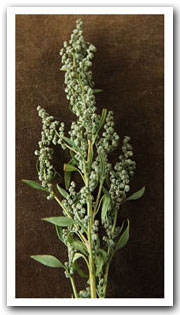
Accumulates oxalates, bitter tasting chemicals that make these weeds unpalatable to horses EXCEPT when little or nothing else is available.
Oxalates prevent the proper uptake of calcium into the blood stream, resulting in muscle tremors, erratic heart beat and bone and joint problems.
Broom
Broom contains several different substances that are  highly poisonous: Cysteine, which works in combination with other alkaloids and enzymes in the plant to produce halluciations and gastrointestinal upset, it also contains quinolizidine alkaloids which cause muscle degeneration.
highly poisonous: Cysteine, which works in combination with other alkaloids and enzymes in the plant to produce halluciations and gastrointestinal upset, it also contains quinolizidine alkaloids which cause muscle degeneration.
Affected animals exhibit muscle tremours, move with s atsiff gait and arched back. Severely affected animals may die of acute respiratory failure!
A little bit of Broom is not going to be harmful but it certainly will be if grazed a lot over time...
The problem with broom is that it tastes good to horses - Remember - you can NOT rely on a horses 'instincts' to keep him from eating bad stuff!
Foxglove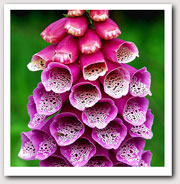
Not particulalry palatable to horses, but there are reports of poisonings through eating either fresh plant material or spikes incorporated into hay.
Only a small amount of this plant is needed for symptoms of poisoning to appear.
Heart rhythm irregulairties, heart block, rapid breathing, weak and irregular pulse, diarrhoea, colic and cold extremities.
The poisons in digitalis are fast acting so prompt action is necessary!
Dock
Dock concentrates oxalates, which as mentioned before, prevents the proper uptake of calcium into the bloodstream resulting in muscle trmors, heart arhythmias, and devlopmental problems involving bones and joints. Leaves of the plant contain tiny, insoluble sharp spicules of the mineral calcium oxalate which can damage the horses kidneys.
before, prevents the proper uptake of calcium into the bloodstream resulting in muscle trmors, heart arhythmias, and devlopmental problems involving bones and joints. Leaves of the plant contain tiny, insoluble sharp spicules of the mineral calcium oxalate which can damage the horses kidneys.
Horses normally won't eat it but they have been known to if there is nothing else to eat. It can also contaminate grain or hay.
Elderberry
The roots, stems, bark and leaves of elderberry concentrate cyanogenic glycosides and other poisonous alkaloids. It appears to be much more poisonous to horses than to humans. Small amounts can produce symptoms in horses of cyanise poisoning including muscle tremors, frequent urination and defecation, gasping, staggering and convulsions.
 Calm Healthy Horses
Calm Healthy Horses